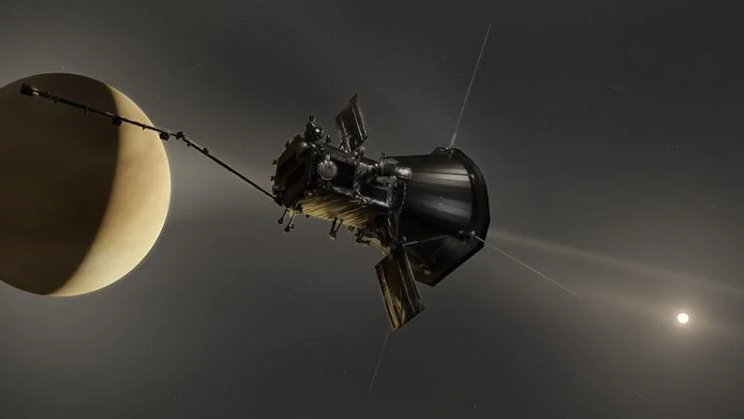We know the second planet from the Sun to be an inhospitable place, cloaked in thick, yellow clouds of sulfuric acid – but according to a new study, a hypothetical trip to Venus might not be full of thunder and lightning.
Whether or not this stormy planet has frequent lightning or not is something researchers have been curious about for decades, ever since an orbiting spacecraft detected phenomenon that could have indicated a monstrous amount of lightning in the atmosphere.
Now, researchers might have an answer, using data from a NASA probe that was never designed to study Venus. The findings were published Friday in the peer-reviewed journal Geophysical Research Letters.
“There’s been debate about lightning on Venus for close to 40 years,” said Harriet George, lead author of the new study and a postdoctoral researcher at the Laboratory for Atmospheric and Space Physics with the University of Colorado Boulder. “Hopefully, with our newly available data, we can help to reconcile that debate.”
Venus has long been a subject of fascination. In our solar system, it’s the closest in size to Earth, but it features one of the harshest landscapes. It would be impossible with our current technology for a human to visit Venus – a runaway greenhouse effect has left the planet cooking in temperatures up to 482 degrees Celsius,
The mystery dates back to 1978, when a NASA spacecraft called Pioneer Venus orbited the planet and picked up numerous signals called “whistler waves” emanating from hundreds of miles above the planet’s surface.
On Earth, whistler waves are frequently created by lightning jostling electrons in the atmosphere and launching spiralling waves out in space that show up as whistling tones audible through radio equipment.
It was theorized that Venus’ whistler waves could be the result of lightning strikes, which would mean that Venus was being terrorized by roughly seven times the lightning strikes that Earth sees.
“Some scientists saw those signatures and said, ‘That could be lightning,’” George said in a press release. “Others have said, ‘Actually, it could be something else.’ There’s been back and forth about it for decades since.”
An opportunity to dig deeper into the question came a few years ago, when NASA’s Parker Solar Probe swooped by Venus, picking up dozens of whistler waves in the process.
The Parker Solar Probe was launched in 2018 with the goal of investigating the physics of the Sun’s corona, as well as solar wind. But George and other researchers realized that the data it was collecting in its flybys of Venus provided them with what they needed to investigate the whistler waves in greater detail.
“It’s very rare that new scientific instruments make it to Venus,” David Malaspina, co-author of the study and assistant professor at LASP and the Department of Astrophysical and Planetary Sciences, said in the press release. “We don’t get a lot of chances to do this kind of interesting research.”
The probe’s pathway will take it by Venus a total of seven times during its entire mission, using the planet to pull itself closer to the Sun. In 2021, on its fourth manoeuver, the Parker Solar Probe passed Venus by at just 2,414 kilometres away from the planet.
Sensors called the FIELDS Experiment which are mounted on the outside of the spacecraft picked up the whistler waves.
When researchers were able to analyze the waves, they found something surprising: the waves were moving in the opposite direction than previously thought.
“They were heading backward from what everybody had been imagining for the last 40 years,” Malaspina said.
The waves were heading down towards the planet instead of out into space, which is what we see when a lightning storm is taking place on Earth. Why Venus’ whistler waves move this way isn’t completely clear yet, although researchers suspect it has to do with magnetic fields.
So does this mean that Venus never sees any lightning? Not necessarily – researchers won’t be able to rule out lightning as a cause of these whistler waves entirely until they’ve been able to gather more data. But it’s unlikely at this point that Venus is under siege from seven times the amount of lightning that Earth sees.
Researchers will know more when the Parker Solar Probe zooms past Venus again on its last pass in November 2024, during which time it’ll pass the planet at less than 402 kilometres away.










































